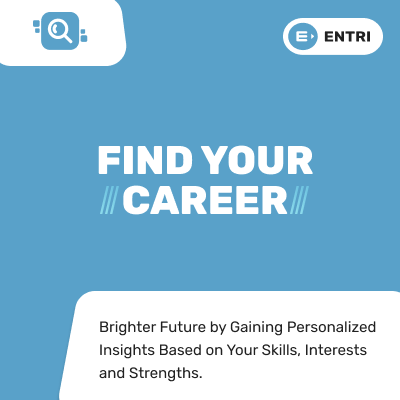Table of Contents
Ashoka the Great lived from c. 304–232 BCE. In 304 BCE, Ashoka the Great, or Ashoka Bindusara Maurya was born to the second emperor of the Maurya Dynasty, Bindusara, and Dharma. The mother of the boy was a commoner. She had many children. There were many half brothers for Ashoka and thus it was not an easy task for him to descend the throne. Ashoka the Great was the emperor of India’s Maurya Dynasty. He ascended the throne in BCE 268 and the period of the Ashoka empire can be marked from 268 to 232 BCE. His reign was famous for the impressive transformation to nonviolence and his compassion. With the demolition of aggression on the Kalinga region in 265 BCE, he altered from living as a bloodthirsty vanquisher of an expansive kingdom to a compassionate monarch who governed efficiently by nonviolent tenets. Ashoka the Great is famous for his moral consciousness as his orders boosted the preservation of creatures, clemency for offenders, and forbearance of other theologies.
Grab the latest GK study materials! Register here!
Emperor Ashoka- Early Life
Ashoka was raised to be a fierce, unsettling, and evil immature male who was consistently excessively enjoying hunting. According to lore, he slaughtered a lion using only a wooden stake. His more geriatric half-brothers feared Ashoka and persuaded his father to assign him as a general to the outlying boundaries of the Mauryan Empire. Ashoka was established to be a brilliant general, setting down a revolution in the Punjabi city of Takshila. His brothers viewed him as a potential rival to the throne and he went into exile in the neighboring country of Kalinga for 2 years. While he was away in exile, he fell in love with a fisherwoman a mere commoner when compared to him. He married her and her name was Kaurwaki. The legends praised him as the toughest and the most eligible candidate for the throne as he was known for his vitality and vigor.
Ace to interesting facts on Coal Miners Day here!
Emperor Ashoka – Family
Ashoka was the majesty of India’s Mauryan Empire. It is said that after moving through the spiritual path, after a sudden epiphany, he became an advocate of Buddhist non-violence. He was born on 304 BCE in Pataliputra, Mauryan Empire. His parents were Empire Bindusara and Dharma. He hailed the eternal adobe in 232 BCE in Pataliputra, Mauryan Empire. His family is vast. Ashoka’s wife was Devi, Kaurwaki and the children were Tivala, Jalauka, Mahinda, and Kunala. He believed in good deeds, clemency, compassion, honesty, and uprightness.
Emperor Ashoka- History
Bindusara called back his son to Maurya to assist in suppressing an insurgency in Ujjain, the ex-capital of the Avanti Kingdom. Ashoka thrived but was badly wounded in the fighting. Buddhist monks preened on the injured prince in unknown so that his eldest brother, the heir-apparent Susima, would not comprehend Ashoka’s injuries. The Buddhist Monks and their intervention in Ashoka’s life were a path breaker for him. He had officially converted to Buddhism and began to draw inspiration from Buddha. The principles of Buddhism elated him to the core. The Buddhist principles and tenants were the exact opposite of the lifeways of Ashoka but still, he managed to let go of the material prospects of his life and embraced the spiritual ways to enlighten his soul. During the time, he fell in love with another woman Devi from Vidisha who had attended to his injuries during the period when he was living in secret. They got married at a later point in time. Bindusara died in 275 BCE. And the brothers began to fight for the throne. According to the legend, a two-year war for the throne exploded between Ashoka and his half-brothers. The Vedic references confirm that Ashoka lasted and evolved as the third ruler of the Mauryan Empire.
Emperor Ashoka- Imperial Rule
Ashoka waged endless war on surrounding provinces for the first eight years of the Ashoka reign. He had acquired a sizable empire. He had done an expansion that could include the Indian subcontinent, along with the borders of Iran and Afghanistan in the west. He even included and acquired land of Bangladesh and Burma border in the east. The kingdom of Kalinga on the northeast coast of India stayed out of his distance. Ashoka blasted Kalinga in 265 BCE. The Kalinga had significance to the life of Ashoka as it was the motherland of his second wifey Kaurwaki and the ruler of Kalinga had harbored Ashoka before his uprise to the throne. Kalinga battled back heroically, but in the ending, it was beaten and all of the regions were taken by the Ashoka. It was a brutal decision taken by Ashoka.
Ashoka had ushered the directive in person, and he reached out to the capital city of Kalinga the daybreak after his success to analyze the deterioration. The destroyed homes and bloodied carcasses of nearly 150,000 massacred civilians and troopers sickened the sovereign, and he experienced a spiritual epiphany. The slaughter at Kalinga directed Ashoka to dedicate himself wholly to Buddhism, and he testified to rehearse ahimsa, or nonviolence in his lifetime.
Ashoka publicized his preferences for the absolute kingdom to comprehend in the form of Edicts. Ashoka documented a succession of directives, describing his approaches and aspirations for the kingdom and encouraging others to pursue his enlightened vision. He posed himself as the example of living through the spiritual ways. The king finds it the best way to enlighten his subjects.
The Edicts of King Ashoka were engraved on the stone pillars 50 feet high. It is located in the Mauryan Empire and also in the heart of the realm of Ashoka. The pillars are also excavated in India, Pakistan, Nepal, and Afghanistan. Ashoka promised to tend to his subjects like a father and pledged to border individuals that they need not worry about him and his reign. The King has promised that he would only use the methods of persuasion, not violence, to successful individuals. Ashoka commented that he had created unrestricted shadiness and fruit trees for the somebody as well as medical supervision for all citizens and animals of his kingdom.
His consideration for living fortes also occurred in a prohibition on live renunciations and sport hunting. He demanded that the citizens belonging to all strata of the society must be equally respected by the people in the country. He asked his people to follow a vegetarian diet. The wild animal’s habitat was preserved and never allowed anyone to burn the wastes in the forest areas which can pose threat to the existence of the wildlife. The protection list has been established by the king to preserve the forest animals.
Ace to the tips to improve your English here!
Emperor Ashoka- Death
Ashoka the Great ruled as an honest and compassionate king. He had transformed due to the epiphany. He died at the age of 72 in 232 BCE. His body was cremated royally. The death of Ashoka was a great loss to the people of the country.
Emperor Ashoka- Legacy
Emperor Ashoka’s legacy can be traced back to the blood of his children. He had 4 children according to the legends. He had twins with his first wife namely Mahindra and Sanghamitra. They converted the land of Sreelanka to Buddhist thoughts. Even after the death of Ashoka, the Mauryan Empire existed for 50 more years and later declined slowly. The last Mauryan ruler was named Brhadrata. The last empire was assassinated by one of his generals named Pusyamitra Sunga in 185 BCE. Ashoka’s legitimate rule after the epiphany continues to provide light to the generation. There lived a great ruler named Ashoka who stood for the cause of general humanity.
Those candidates who are preparing for any of the competitive exams should find the aptest general knowledge blogs to learn flawlessly. Entri App can help the candidates to grab the facts more easily and effectively. The up-to-date revival of the ancient topics and the new updation can be helpful to the candidates who are preparing for any of the competitive exams.
Attempt a quiz! Download Entri App!













